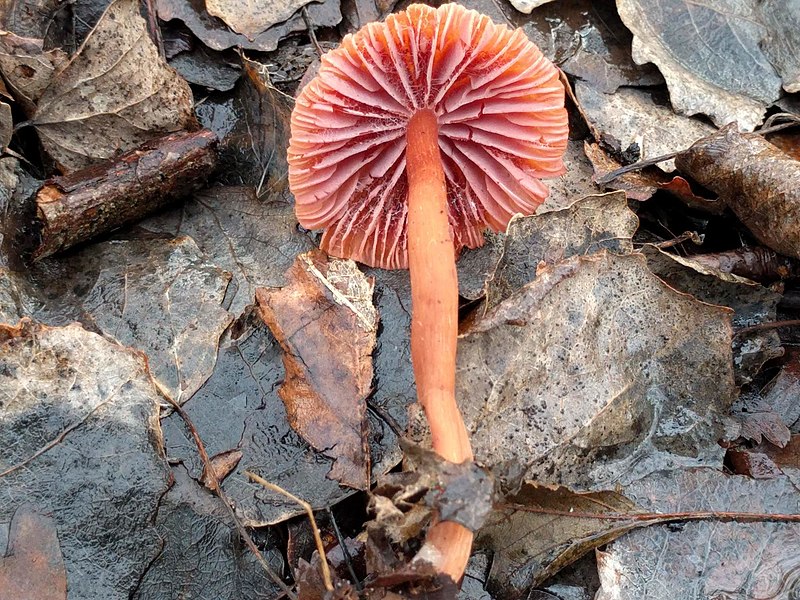The Deceiver Identification – Laccaria laccata
Heads up
Mushrooms come in many shapes, sizes, and colors, and one of the most intriguing is Laccaria laccata, often known as the Deceiver. The Deceiver is known for its mycorrhizal trait. It forms a beneficial partnership with plant roots, particularly with trees like pines, beeches, and birches. Through this partnership, the mushroom helps the tree absorb nutrients while receiving sugars in return.
The Deceiver: Key Parts in Photos




Where to find it
If you’re out on a nature walk in North America or Europe, particularly in wooded areas or places with poorer soil, keep an eye out for the Deceiver. This mushroom has a penchant for popping up in such terrains. One of its fascinating features is its ability to exhibit a wide range of appearances, from vibrant young ones showing off pinkish-brown and orange shades to older ones that can seem washed out or even colorless. This variability is why it’s termed the ‘Deceiver’. Because of its frequent appearance and plain look, some mushroom enthusiasts refer to it as a ‘mushroom weed’.
How to identify The Deceiver
The Deceiver is modest in size. Young mushrooms have a cap that’s curved upwards, but as it ages, the cap spreads out and might even become a bit sunken in the middle. These caps can range from 1-2.5 inches across. The cap’s color can be a telling feature. When the mushroom is young or if it’s wet, the cap may sport shades ranging from pink to brick-red or even various hues of orange and brown. If the mushroom is older or if it has dried, these vivid colors may fade to a paler version.
The stipe, is fibrous and stands at a height of anywhere between 1-4 inches. It’s not very thick, being only up to half an inch wide.
Now, let’s talk gills. Gills are the vertical structures under the mushroom cap where spores are produced. In the Deceiver, these gills are not perfectly lined up; they can be irregularly spaced. Their attachment to the stipe can vary, sometimes flowing smoothly down the stem (decurrent) or just slightly attached (adnexed). These gills might start off being a shade close to the cap’s color but will turn white as the mushroom grows and the spores mature. Speaking of spores, if you were to make a spore print, it would be white. These spores are round with little spikes and are about 7-10 micrometers wide.
Here’s a quick recap of the Deceiver’s features for keen-eyed observers:
- Cap: Initially convex, becoming flatter with age. Colors range based on age and moisture.
- Gills: Wide-spaced, irregular, with a similar color to the cap but turning white with age.
- Stipe: Fibrous and can be ‘hairy’ at the base.
- Spores: Round with spikes, measuring 7-10 micrometers. White spore print.
One small but essential detail to remember: while the Deceiver doesn’t have any unique smell or taste, always exercise caution. Never consume a wild mushroom unless you’re absolutely sure about its identity, and always consult with an expert.
Want to learn more?

Disclosure: This post includes affiliate links. If you make a purchase through these links, we may earn a commission at no extra cost to you. We appreciate your support, as it helps keep this website running. Alternatively, you can search for the book title on Amazon if you prefer not to use the links. Thank you for your understanding and support!
